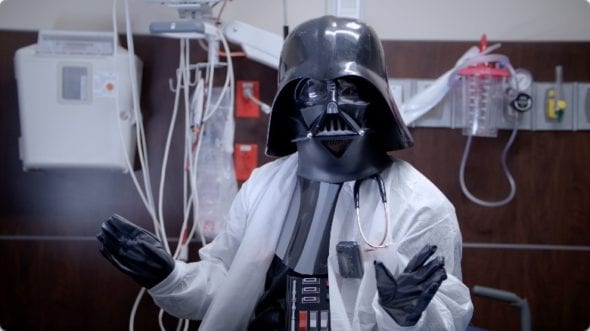Wanna support this Movement and get access to exclusive live deep-dive conversations and uncensored early releases? Become a SuperPac supporter on Facebook HERE!
Deleted Facebook after the election? Support the movement on Patreon!
Dr. Adam Ackerman is a hospitalist at Yale and the author of a pilot study in JAMA that may transform the way we think about inpatient opioid use and pain control.
Should We Be Reinventing The Opioid Wheel?
Opioids are commonly prescribed in the inpatient setting to help patients with acute pain. Most often, they are given intravenously, but this route can pose the risk of increased side effects (think nausea, hypotension, pruritus, and respiratory depression) when compared to oral and subcutaneous routes.
And there’s some concern that the IV administration of narcotics can increase potential for opioid addiction. Remember “Treat Yourself?”
“It seems like almost as a profession, we’ve kind of forgotten about subcutaneous opioids . . . but subcutaneous is something that, if you talk to older nurses and doctors, they’ll say, ‘Oh yeah, that’s the only way we ever used to give these.’”
So what if the opioid standard was changed to utilize oral and subcutaneous routes instead of IV?
Dr. Ackerman found that intravenous opioid dosing was reduced by 84% after adopting an opioid standard of practice, with mean pain scores similar to those before implementation of the new standard.
If pain scores remain the same and we are able to provide our patients with less side effects, why not consider this approach in your practice?
You can check out the original video here on Facebook and leave your comments. I want to hear what y’all think about this.
Don’t have time to watch? Check out the free podcasts on iTunes and Soundcloud here.
Related Videos
Category
- The ZDoggMD Show (799)
- Featured Videos (188)
- Doc Vader (142)
- Against Medical Advice (128)
- Medical Humor (95)
- Public Service Announcements (87)
- Music Parodies (74)
- Nurses (59)
- Meditation (38)
- ZVlogg (36)
- The VPZD Show (31)
- ZTalks (28)
- ZBlogg (24)






